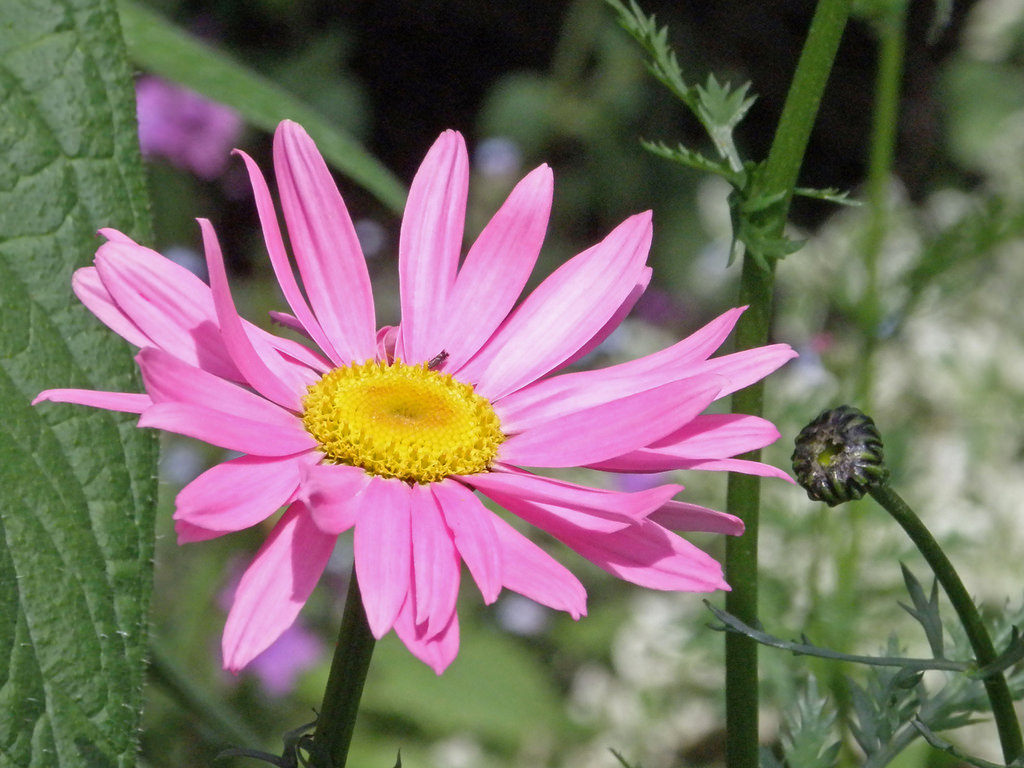Crop byproduct pyrethrum marc brings returns comparable to conventional fertilisers
A pyrethrum crop: pyrethrum marc, left over from crops grown for insecticide makes a cost-effective soil conditioner, AUSVEG research has found.
Gabe Saldana, Texas AgriLife, Flickr CC
Over the past four years, AUSVEG researchers have been trialling the use of soil amendment pyretheum marc on a vegetable crop site in Tasmania, comparing it with the same vegies grown using alternative soil conditioners biochar, oaten chaff and traditional chemical fertilisers.
Pyrethrum marc is the shoot and flower material that remains after insecticidal pyrethrins are extracted from pyrethrum crops for use in insecticides. Every year, several thousand tonnes of pyrethrum marc are available in Tasmania.
It is also a soil conditioner and a source of key crop nutrients, with benefits typically extending for at least a year post-application.
Based on the crops grown and yields achieved in the four-year AUSVEG trial, the researchers concluded that at a cost of $60-65 per tonne, delivered, pyrethrum marc offers comparable returns to those of conventional fertilisers.
In four of the six trial plots treated with pyrethrum marc, the margins were similar to or better than those treated with the normal fertiliser (the ‘control’ plots).
Pyrethrum marc applied at a rate of 100 tonnes per hectare, multiple times – one of the eight treatments trialled in crops including onions, green beans, broccoli, peas and carrots – resulted in lower margins due to the cost of the extra marc required and the additional spreading and incorporation costs.
Marc applied a single time at the lower rate of 25t/ha resulted in a slightly lower margin than the control (conventional fertiliser) treatment but a higher margin than the ‘no fertiliser’ treatment.
The researchers viewed the results of the trial as “promising, given that no additional fertiliser was applied along with any of the marc treatments and some received marc only once, in 2012”.
They concluded that pyrethrum marc “can offer benefits as a soil conditioner and also as a source of nutrients for crops” – noting, however, that to maximise the economic benefits of applying pyrethrum marc, growers need to conduct regular soil testing and monitoring in tandem with a fertiliser program.
The flowers and shoots discarded when the insecticidal component of the crop has been extracted can be used as a soil conditioner.
Amanda Slater, Flickr CC
More information
For more information about the trial, the various treatments applied and the results achieved for the five vegie crops grown, download the Forthside Demonstration Site Factsheet. http://www.soilwealth.com.au/imagesDB/news/SW_ForthsideDemonstrationSiteFactSheet.pdf
To find out more about Soil Wealth and ICP projects, visit the Soil Wealth/ICP website, http://www.soilwealth.com.au join the Community of Practice online or follow the projects on Twitter @SoilWealth and @ProtectingCrops.
|
Soil Wealth is funded by Horticulture Innovation Australia (HIA) using the National Vegetable Levy and funds from the Australian Government. |



